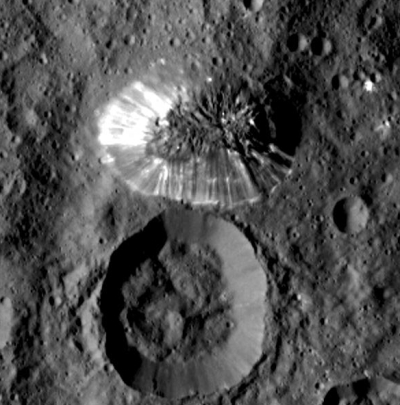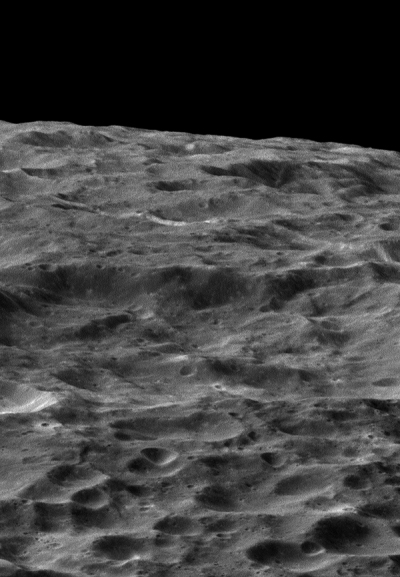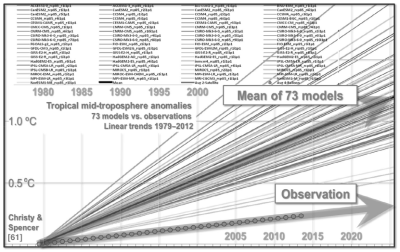New sharp images of Ceres from Dawn
 />
/>
Cool image time! The Dawn science team has released new images of Ceres, including one of a single mountain they have dubbed the Lonely Mountain.
The mountain, located in the southern hemisphere, stands 4 miles (6 kilometers) high. Its perimeter is sharply defined, with almost no accumulated debris at the base of the brightly streaked slope with bright streaks. The image was taken on August 19, 2015. The resolution of the image is 450 feet (140 meters) per pixel.
I have cropped the image and posted it on the right. Be sure to look at the full resolution version. Not only does the mountain have no debris at its base, it truly is lonely. There are no similar features anywhere near it. It almost looks like someone took a shovel of material out of the ground to create the crater immediately to the south and then dumped that material to create the mountain.
Note that the mountain is more like a mesa, with a flat top, which suggests it is the remains of a higher elevation surface that eroded away in the distant past. The geological processes that could have done this however remain quite puzzling at this point.
 />
/>
Cool image time! The Dawn science team has released new images of Ceres, including one of a single mountain they have dubbed the Lonely Mountain.
The mountain, located in the southern hemisphere, stands 4 miles (6 kilometers) high. Its perimeter is sharply defined, with almost no accumulated debris at the base of the brightly streaked slope with bright streaks. The image was taken on August 19, 2015. The resolution of the image is 450 feet (140 meters) per pixel.
I have cropped the image and posted it on the right. Be sure to look at the full resolution version. Not only does the mountain have no debris at its base, it truly is lonely. There are no similar features anywhere near it. It almost looks like someone took a shovel of material out of the ground to create the crater immediately to the south and then dumped that material to create the mountain.
Note that the mountain is more like a mesa, with a flat top, which suggests it is the remains of a higher elevation surface that eroded away in the distant past. The geological processes that could have done this however remain quite puzzling at this point.


